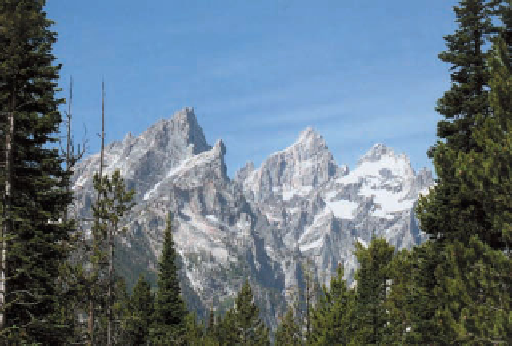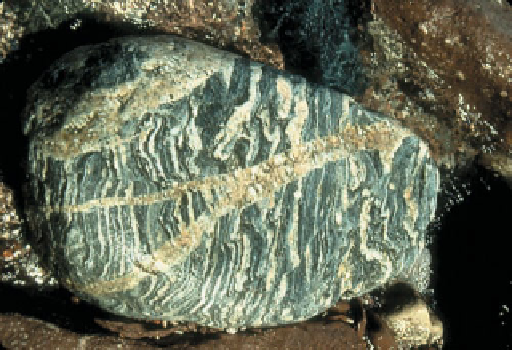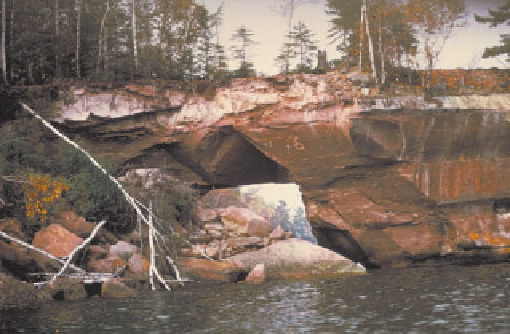Geology Reference
In-Depth Information
4. The rocks of Teton Range in Wyoming are gneiss, schist, and
granite between 2.5 and 2.8 billion years old (Archean). However,
the range itself formed only during the last 10 million years. The
peaks in this image are known as the Cathedral Group.
5. View of Precambrian rocks in Custer State Park in the Black Hills
of South Dakota. Erosion along fractures in the 1.7-billion-year-old
Harney Peak Granite yielded these spires known as the Needles.
7. Proterozoic-age rocks in the Sangre de Cristo Mountains in
northern New Mexico. The dark rock is a basalt dike that has been
intruded into quartzite.
6. This 1-m-long attractive boulder of Precambrian gneiss is on
a beach at Marquette, Michigan. It was transported here from On-
tario, Canada, by glaciers, and since that time it has been washed
around on the beach, accounting for its rounding. Also note that it
has been intruded by a granite dike.
8.
Outcrop of the 600-million-year-old (Proterozoic) Bayfi eld Group
in Apostle Islands National Lakeshore in Wisconsin. The rocks were
originally deposited by streams. Notice the arch cut in the rocks by
wave action.
509






Search WWH ::

Custom Search